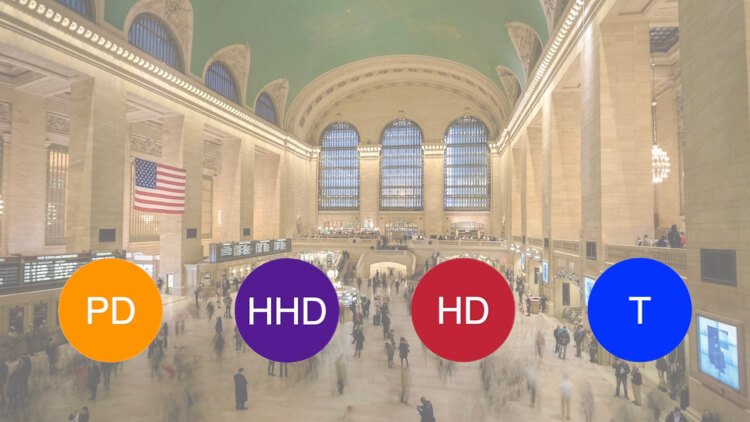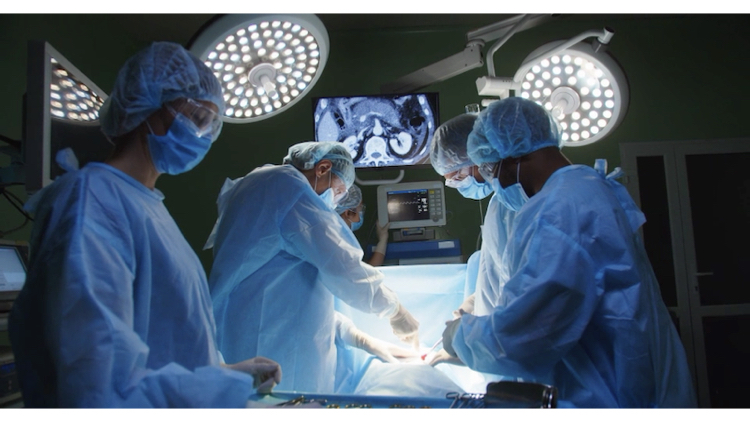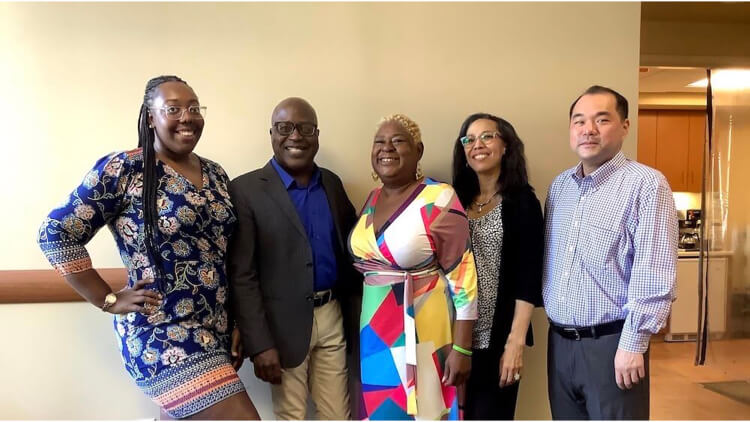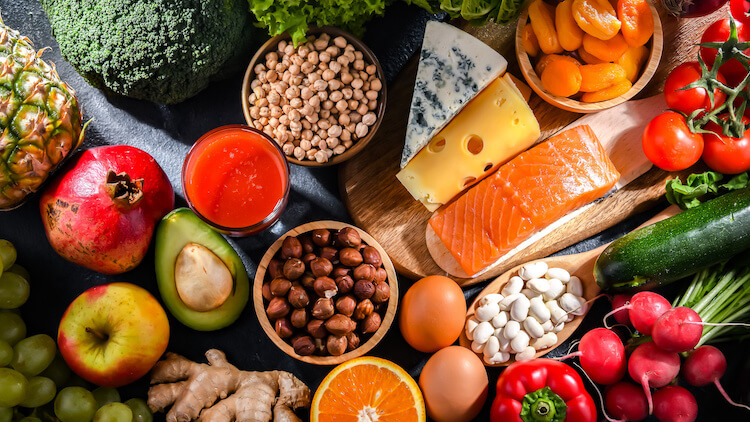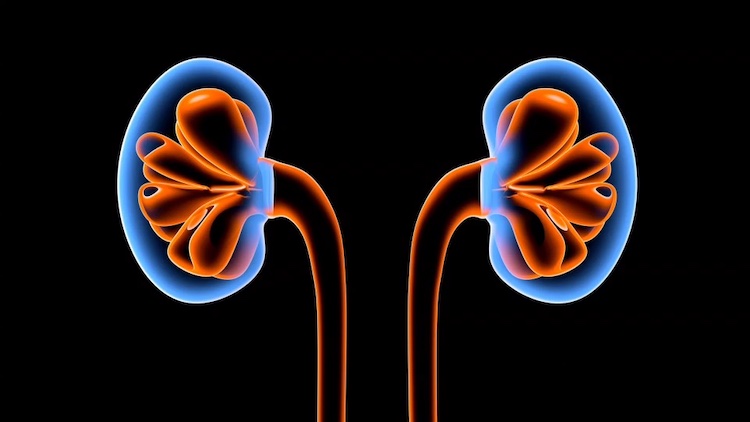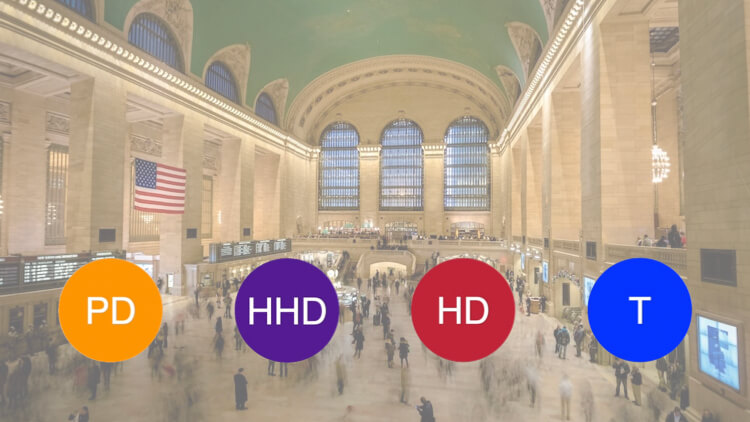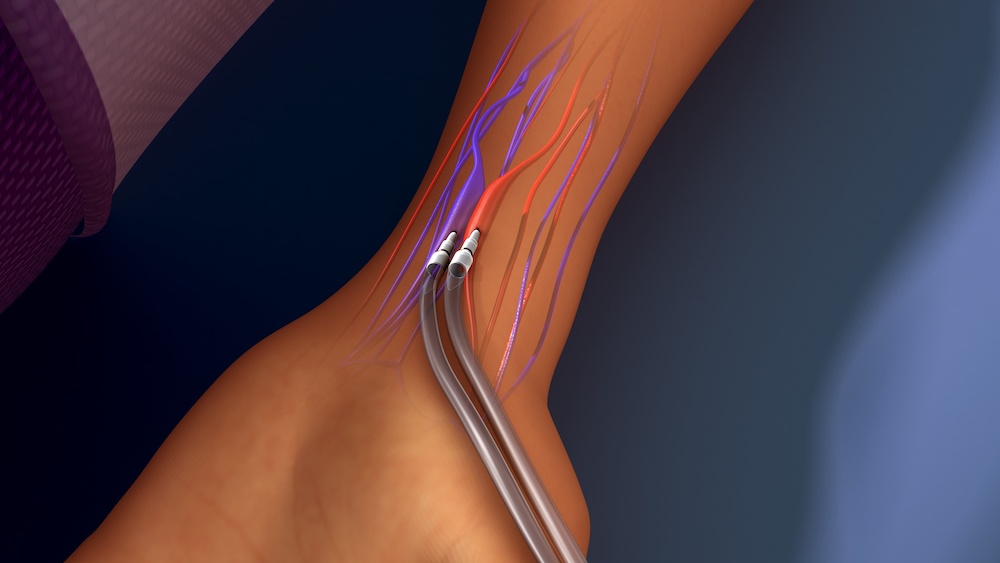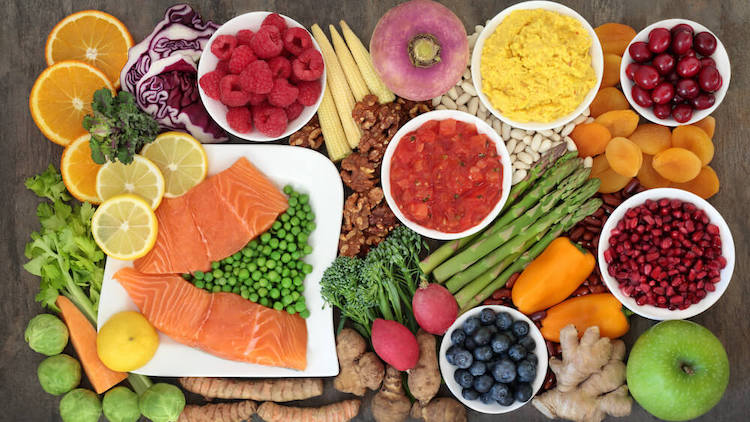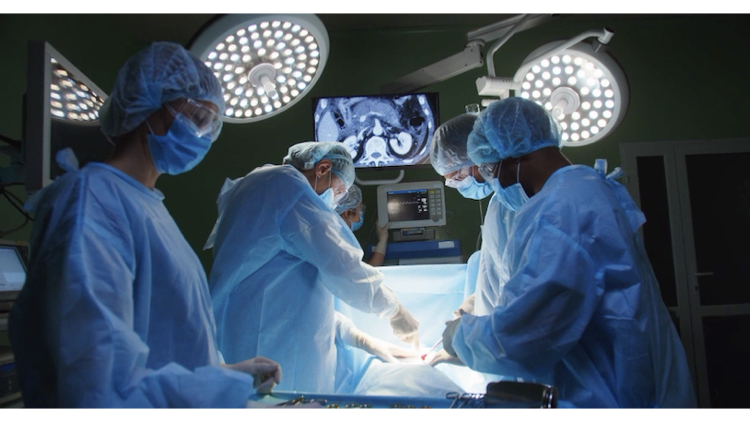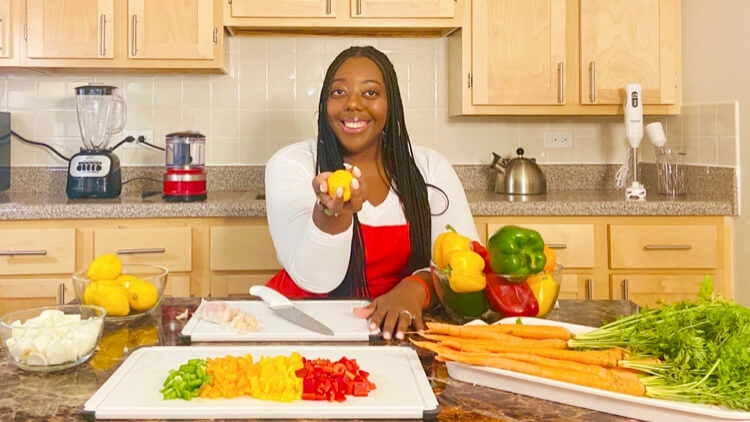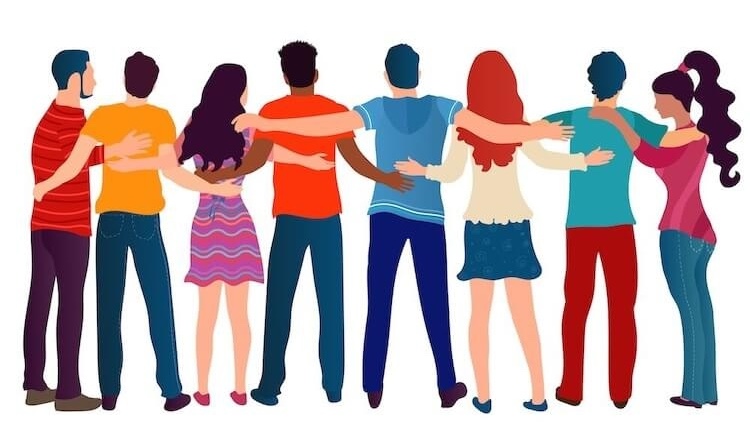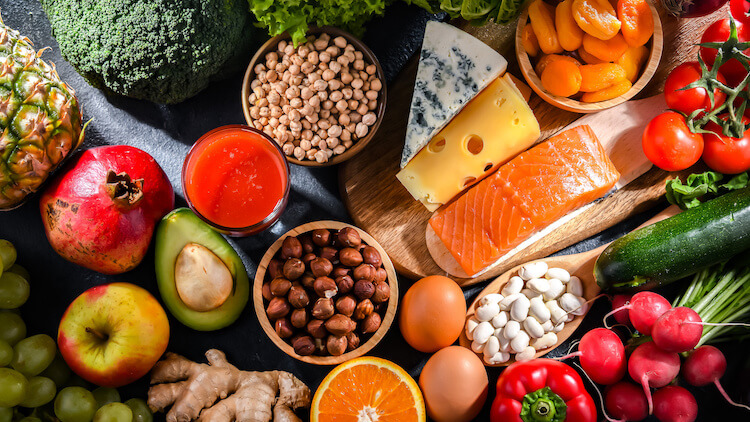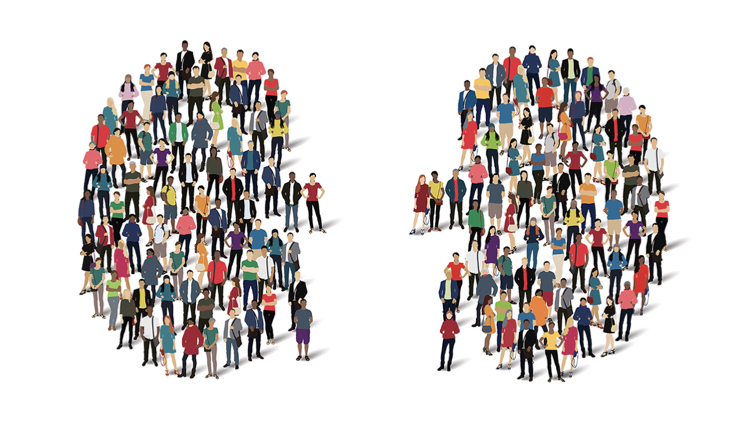Loading...

Food Choices for a Healthy Lifestyle
Learn how to make choices and plan meals
for a healthy lifestyle!
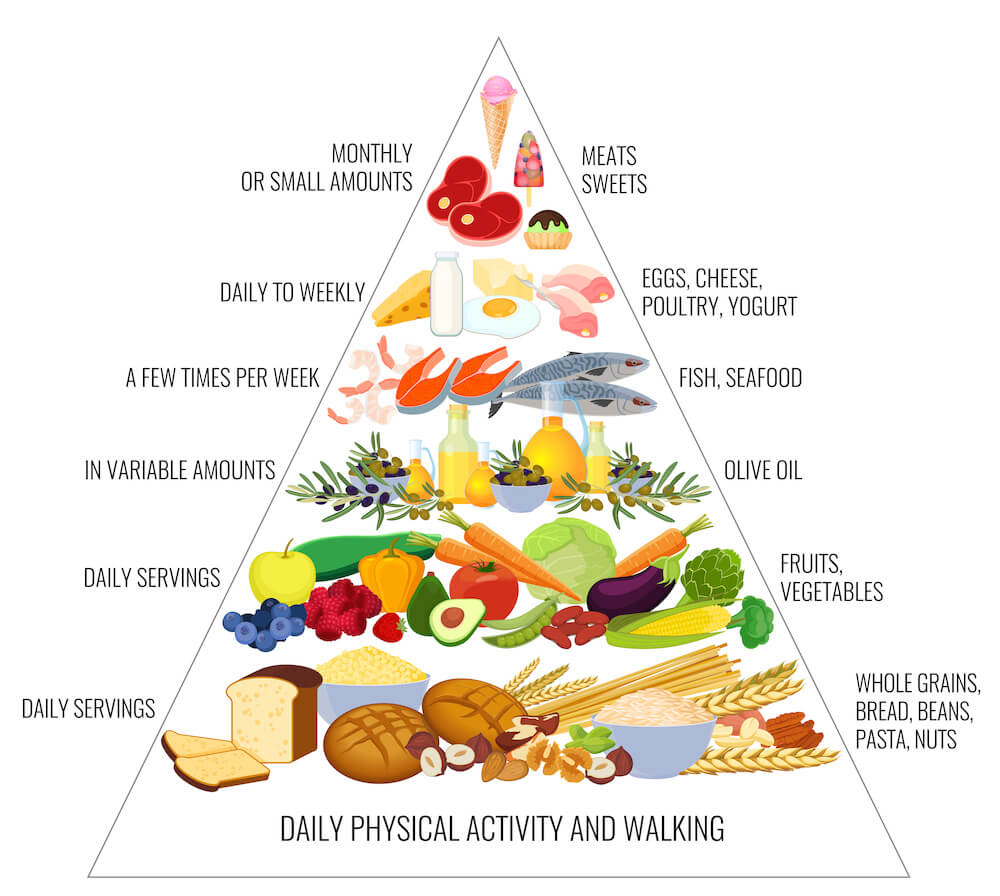
Our “kidney diet” recommendations are not just a diet but an important part of a healthy lifestyle that includes healthy food choices for your KIDNEYS, HEART and YOU! Yes, there will be special days and holidays - enjoy them! Customize your food choices and options to your likes and dislikes. You do not need to be organic - just select a variety of fresh, frozen and canned fruits and vegetables without added salt or sugars. Your meals should be plant-based, largely consisting of fruits and vegetables while limiting the number of meals that include poultry and fish. Specifically, no more than 5 fish choices (including scallops, shrimp, salmon, halibut, tuna) and 5 poultry choices (chicken or turkey) in a week, and red meat only as an occasional special treat. Use the diagram as a guide.
Remember! Read all food labels and consult with your renal dietitian to discuss your meal plans!
Nutrition Guidelines for Preserving Kidney Function
Diet and Nutrition Goals
Your goal is to maintain an optimal body weight while avoiding protein calorie malnutrition which includes muscle wasting (also known as sarcopenia), and maintaining adequate vitamin levels. Diet also can affect high blood pressure, diabetes mellitus, high cholesterol, blood acid levels (also known as acidemia), potassium and phosphorus. While this may seem complicated, we can guide you through it, together with your dietitian.
Protein Intake - the basics:
Most people eat 1.0 -1.4 g/kg of protein per day. The Recommended Dietary Allowance (RDA) of protein for kidney patients is 0.8g/kg per day. Too much daily protein intake is not the best option for maintaining kidney health and may cause kidney damage and chronic kidney disease as well as quicken the decline in kidney function in individuals with chronic kidney disease. A daily total protein intake of > 1.2g/kg per day will result in negative kidney outcomes and in fact, for individuals at high risk of chronic kidney disease (this includes individuals with a single kidney, including kidney transplant recipients), protein intake above 1.0g/kg per day should be avoided. The amount of protein you eat after a heart attack is even more important to your kidney function: eating too much protein causes the kidneys to work harder to clean your blood (hyperfiltration).
The source of the protein you eat is very important. Dietary protein is also metabolized into a number of different "toxins". Animal source foods (ASF) include meat, poultry, fish, eggs and dairy. Excess consumption of processed meat, red meat and its associated saturated fat contribute to obesity, cardiovascular disease, diabetes and certain cancers. However some ASFs are rich in vitamin A and/or D (especially fatty fish), calcium, iron and zinc. Other considerations:
- Processed meat, pork, poultry and fish are preserved through salting, fermentation, and other processes that reduce kidney function.
- Preservatives, including salt (sodium), nitrites and nitrates contribute to a higher risk of hypertension, stroke, cardiovascular disease, diabetes and cancer.
- Animal protein intake is more likely to contribute to acid build-up (acidosis) in your body and high phosphorus levels (hyperphosphatemia) which can cause bone softening and calcium build-up in blood vessels and the heart.

Plant protein, especially plants with high fiber, helps preserve kidney function, lower blood pressure, neutralize acids that build up in your body and lowers phosphorus. The phosphorus in plants is not as well absorbed when compared to animal sources and even maintains or lowers potassium. The fiber in plants makes food move through your body faster, so potassium is less likely to be absorbed. If your doctor or nurse practitioner prescribes or suggests taking sodium bicarbonate, this means you have excess acid in your blood.

Based on the above considerations, we recommend an “overall” diet - not specific foods to eat or refrain from eating - that will promote cardiovascular health. Consistent with encouraging cardiovascular health we recommend a "Kidney Diet" that prioritizes fruits, vegetables, legumes, beans, whole grains, olive oil, moderate poultry and fish intake, while minimizing meat (including beef and pork), processed foods and sweets. Overall the diet should include 0.6 to 1g/kg of total protein intake per day and this should be individualized by working with a renal dietitian. If you and your dietitian set 0.8g/kg of protein per day as your protein goal, you will have some flexibility in your food selections. Specific "nutrient/food" restriction is only necessary if serum levels of potassium, phosphorus or acids are at unsafe levels.
Tools to Manage Your Diet Budget
You can think of the food you eat every day as a diet budget, balancing what you eat for breakfast, lunch and dinner, including snacks, so you do not exceed current guidelines for protein, calories and sodium. If you are using a computer, we suggest you print out a worksheet that you can fill out by clicking on the Print a Budget Calculator Worksheet button. Look up food items on the Nutritionix website to look for food labels online and fill out the printed form. Click on the search symbol (magnifying glass) at the top of the Nutritionix webpage and enter the food item you are looking for in the Search Food Database field. Some of the food items you buy may have food labels on them, but some may not. Enter the data from your worksheet into the online calculator.
Alternatively, if you have two electronic devices, a computer and/or a tablet or smartphone, you can use one device to look up food labels and the other to fill out the food calculator online. You can also download and install the Rogosin Diet App for Apple or Android tablets or phones.
Diet Budget Calculator Example
Using the food labels below and Nutritionix enter the values in the calculator from our Monday menu below for Breakfast, Lunch and Dinner. Assume a body weight of 145 lbs.
Breakfast
Oatmeal* Protein 5g, Calories 150
Mixed fruit cup** Calories 50, 5mg Sodium
Apple Juice** Calories 120, 30mg Sodium
* No sodium contribution
**No protein contribution
Lunch
Vegetable Soup Protein 5g, Calories 180, 720mg Sodium
Pasta Salad Protein 11g, Calories 190, 530mg Sodium
Dinner
Grilled Chicken Breast Protein 25g, Calories 130, 180mg Sodium
Green beans Protein 2g, Calories 35, 5mg Sodium
Rice Pilaf Protein 4g, Calories 261, 574mg Sodium
Olive Oil (3 tbsp)* Calories 357
*No protein or sodium contribution
Click below to view Food Labels
This menu gives a total of 52 g of protein , 1473 calories and 2044 mg of sodium, all in budget.
Oatmeal

Mixed Fruit Cup

Apple Juice

Vegetable Soup

Pasta Salad

Vegetable Soup

Pasta Salad

Grilled Chicken Breast

Green Beans

Rice Pilaf

Olive Oil

Grilled Chicken Breast

Green Beans

Rice Pilaf

Olive Oil

Fast Foods
Let's talk about fast foods. It is very easy to eat your total food budget (protein, calories and sodium) or more in one meal at a fast food restaurant. Here we provide links to nutritional information provided by the fast food vendors. You can use this information to see exactly what you would be eating based on your selections. You can find links to nutritional information for additional popular restaurant chains here.
Ethnic Foods
Here are some ethnic foods with links to nutritional information. Click on the blue links to see additional information on each page for each food item. You can search for additional ethnic foods on the Nutritionix website by clicking on the search symbol (magnifying glass) at the top of the page and entering the ethnic food you are looking for in the Search Food Database field.
Protein Restriction and New Medications
How do the benefits of protein restriction compare with some of the newer medications that are available to slow a progressive decline in kidney function? This is an interesting unanswered question and we believe that diet and these newer medications complement each other to achieve the goal of a slower decline in renal function in individuals with chronic kidney disease. The medications that we are referring to include:
- Medicines used to treat high blood pressure and congestive heart failure ACEi [angiotensin converting enzyme inhibitors (e.g. lisinopril (Zestril)], enalapril (Vasotec) and ARBS angiotensin receptor blockers (losartan (Cozaar), irbesartan (Avapro), valsartan (Diovan).
- Medicines used to treat type 2 diabetes mellitus - SGLT2i that blocks glucose reabsorption in the kidney empaglifozin (Jardiance), dapaglifozin (Farxiga), canaglifozin (Invokana).
- Medicines used to treat high blood pressure and congestive heart failure Mineralocorticoid (Aldosterone) Receptor Antagonists that prevent the kidneys (and other tissues) from reabsorbing salt (sodium) - finerenone (Karendia).
Calorie Intake
Assuming usual activity during the day and exercise, to avoid "malnutrition", 25-35 cal/kg per day is recommended. To understand these recommendations and specifically individualize them, a diet to provide adequate calorie intake should be reviewed with a dietitian, in conjunction with above need to calculate protein consumption.
Salt Intake
Salt intake, including what is naturally contained in foods, should be limited to 2300mg of sodium per day. Make sure to read food labels to help you know how much sodium you are consuming.
Salt Substitutes
Salt substitutes typically contain large amounts of potassium and should not be used. Spices can be blended to flavor food without salt. NKF has suggestions for blending your own spices with specific foods here: Low Salt Flavor Enhancers.

A great option to add wonderful flavor to your kidney-friendly meals is the variety of Dash Salt-Free Products which are potassium free! These seasonings include Garlic & Herb, Onion & Herb, Original and Table Blends, Garlic Herb (contains 2 grams (2g) of sugar per serving) and Lime Garlic Marinades (contains 1gram (1g) of sugar per serving). Most of their other seasonings have 10 mg of potassium or more per serving.
Remember: always read food labels!
Want more options on delicious salt substitutes? Go to The Best Salt Substitute for Kidney Patients on the Kidney Dietitian website.
Learn about why and how extra sugar, salt, potassium and phosphorus affects dialysis patients from your heart to your bones! You will also get answers to “Frequently Asked Questions” near the bottom of the page.
Learn about our food guidance for transplant patients.
Sugar Substitutes
Our best recommendation is to learn to like things less sweet. Current research shows that eating artificial sweeteners in food and drinks may stimulate appetite and cause overeating leading to weight gain and contribute to heart disease, stroke and high blood pressure.
NKF recommends:
- Maple syrup, honey and agave nectar may be used in moderation as alternatives to sugar, but will also raise blood sugar if too much is eaten.
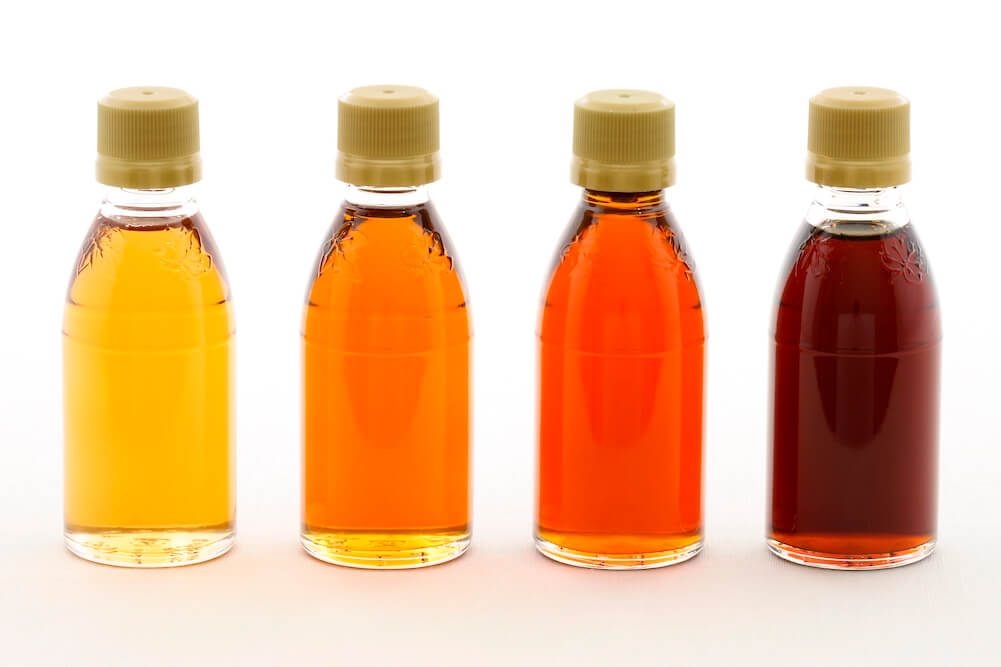
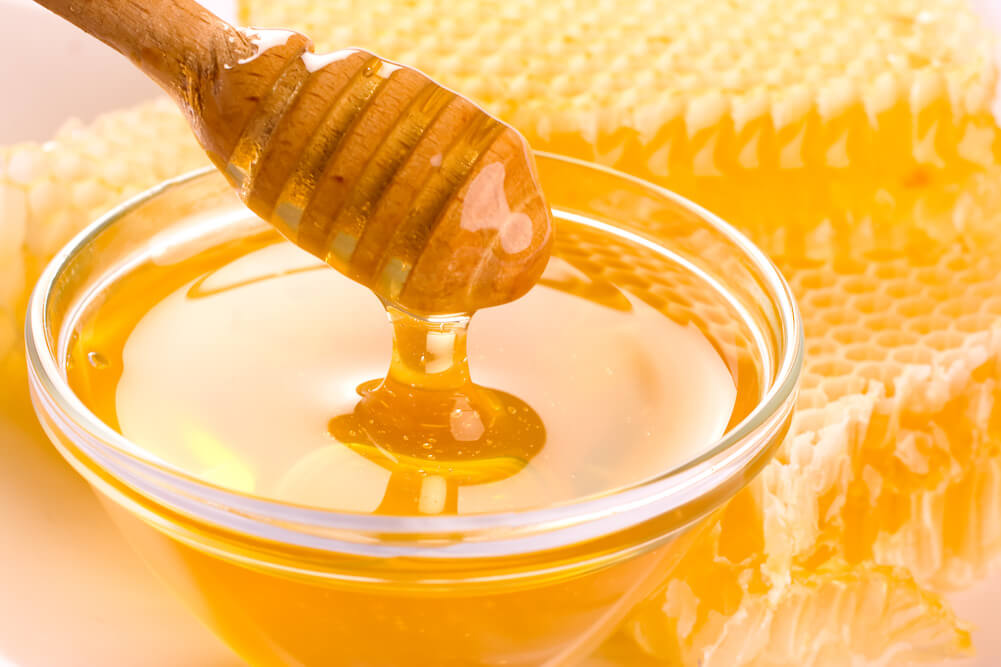
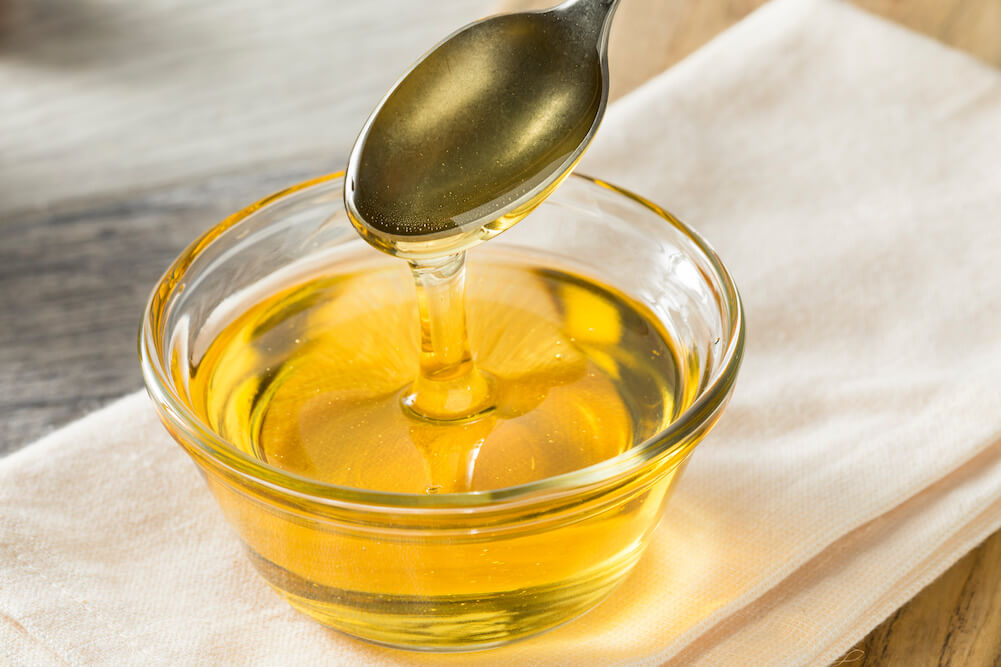
- Sweeten baked goods naturally using applesauce, bananas, dates and prunes. These alternatives also add beneficial nutrients and fiber that sugar alone does not. Use bananas sparingly because they are high in potassium.
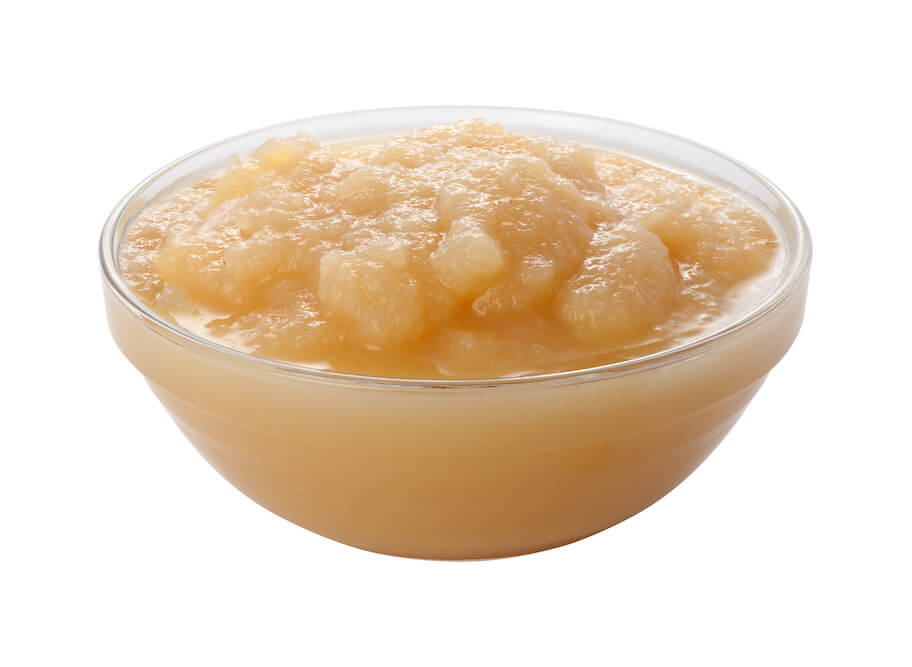

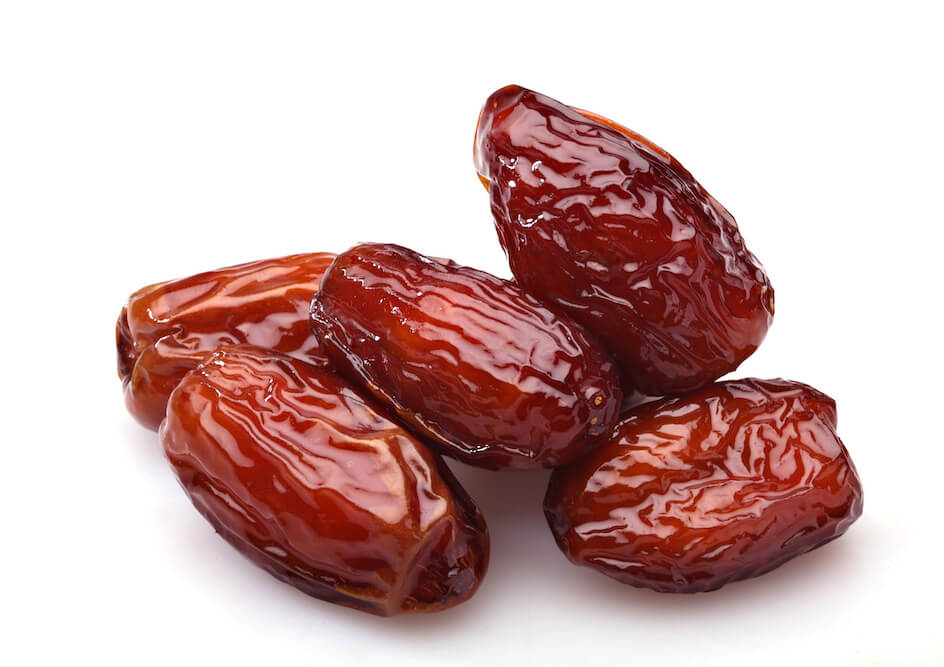
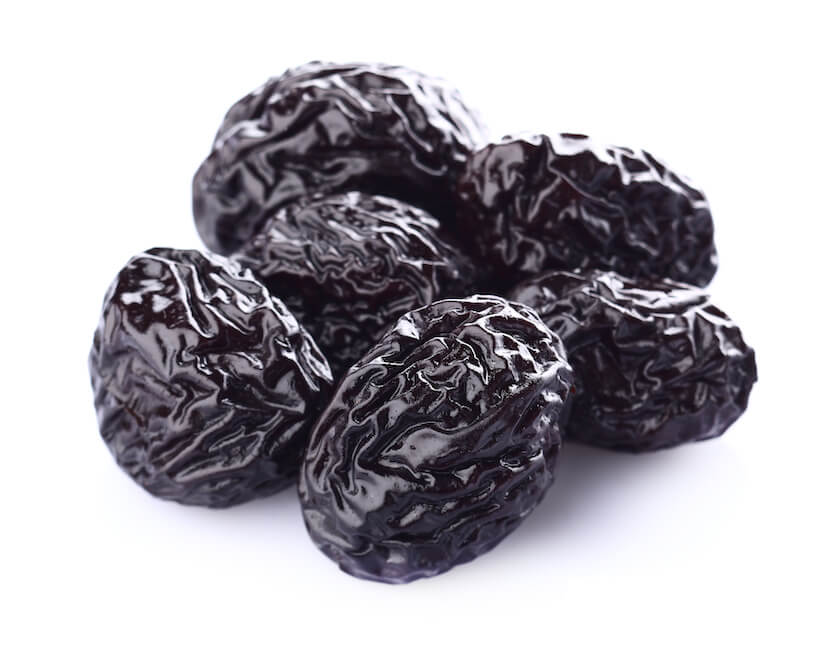
Read more about Are Sugar Substitutes Okay for Your Kidneys on the NKF website.
Use the Plate Method to Plan Meals
My Plate Planner was developed as part of Take Care New York (TCNY) to prevent obesity by helping people to easily plan their meals and adjust portion sizes of starch, protein, fruits and vegetables. Kidney patients need to limit their bananas, oranges and grapefruits because they are high in potassium. If you have diabetes, you should limit starches like rice which may raise blood sugar.

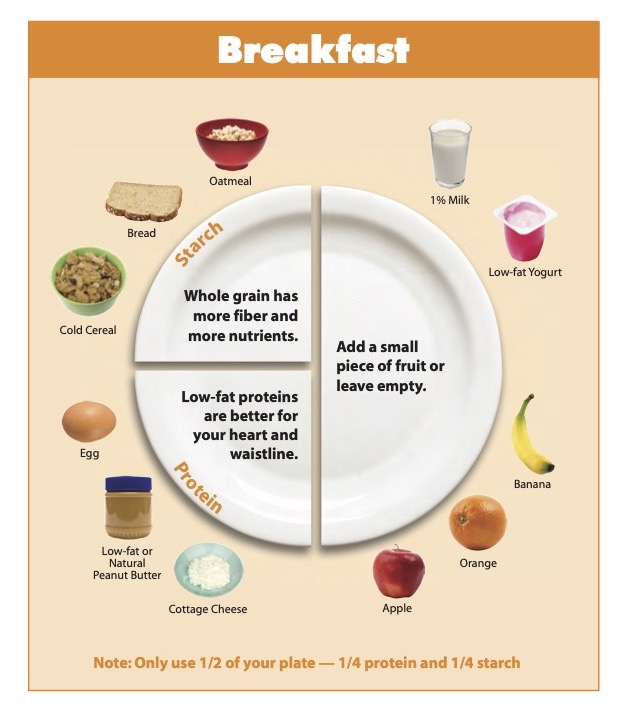
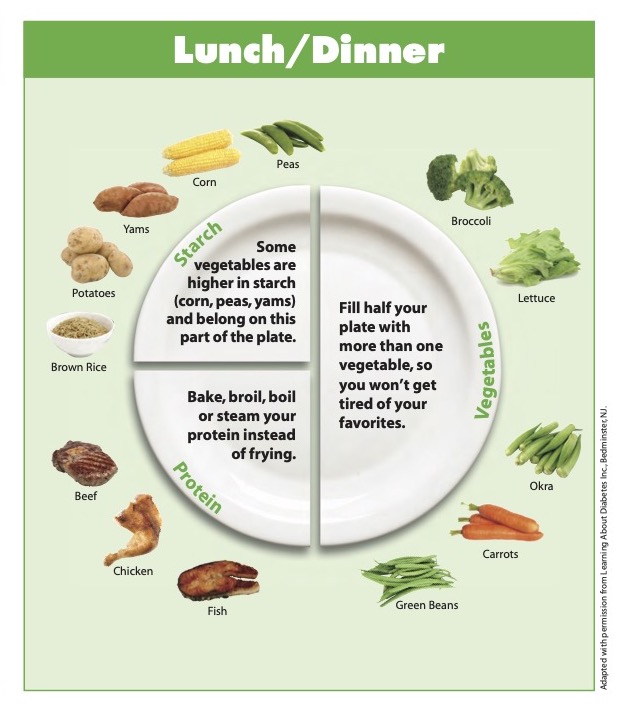
The plate below shows a healthy meal with appropriate portion sizes.
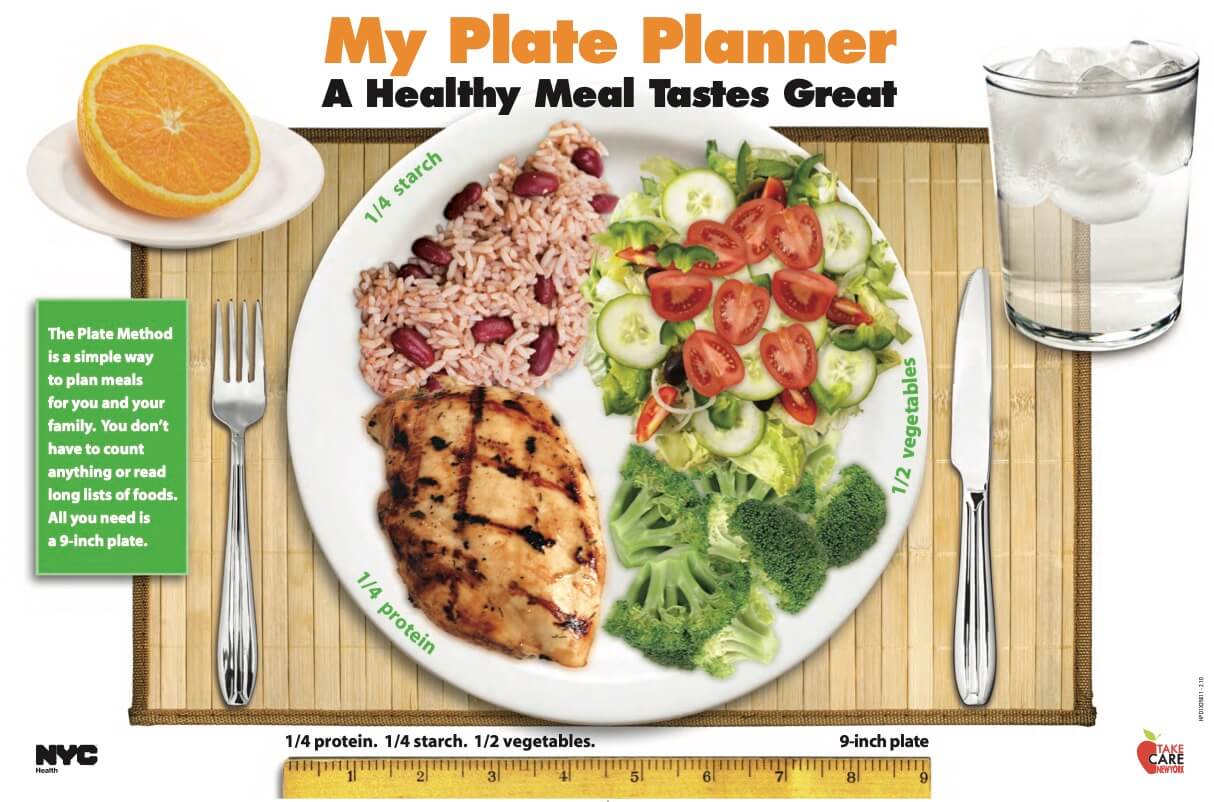
Download My Plate Planner from the web page.
Recipes
A crock pot slow cooker can help you prepare healthy meals on those busy days.
These recipes are provided by our Wellness Ambassadors and have been reviewed by a renal dietitian.
Frequently Asked Questions
What do we mean by meat? Meat includes beef, veal, lamb and pork.
How many times can I eat meat? We suggest a maximum of one meat meal per week.
Can I eat processed or cured meats like bacon, sausage, ham salami, etc.? You should never, or at most, rarely eat processed meats.
Can I eat dairy products including milk and cheese? You can eat one cup per day of low fat or non-fat milk, yogurt or a 1 ounce serving of cheese. Consider alternatives like almond or oat milk. Do not eat coconut milk or coconut products.
Can I drink wine? You can drink 3 - 4 ounces of wine with a meal.
Can I eat fried and fast foods in my daily diet? You should not eat deep fried or fast foods because they are high in sodium and additives like nitrates and MSG (monosodium glutamate).
Can I have cake or cookies every day? Small portions are the key. Your daily goal is less sugars.
What is the best oil to use for cooking and salads? Olive oil is the best oil to use; extra virgin olive oil is perfect for salads or sautéing, and any of the “light” versions are ideal for cooking. Whichever you choose to cook with, remember to use low heat only.
What can I use to season my food? Herbs including fresh garlic, pure garlic powder (not garlic salt), pepper, sage, parsley and cinnamon.
Will I still be able to enjoy my cultural foods? Yes! You can still enjoy cultural foods with some adjustments and still eat a variety of healthy foods, including a plant-based diet. Your dietitian will help you adjust your diet to your cultural preferences and set goals to meet your body’s needs.
What snacks can I eat? Rice cakes or corn cakes, any flavor, apple cinnamon/sour cream. “Organic Snack Rollers” - brand - apple cinnamon. Unsalted pretzels, unsalted saltine crackers Graham crackers / vanillas wafers / ginger snap cookies. Hot air popcorn. Frozen sorbet / frozen “Outshine” pops. Soy milk ice cream. “Made Good” (nut free) granola bar. “Love Corn” crunchy snack (“0” potassium), “Pipcorn” corn dippers. Limit all chocolate intake.
What snacks should I avoid? Do not eat sorbet or ice cream made with coconut cream or milk.
Schedule a virtual visit with a Wellness Ambassador here.

